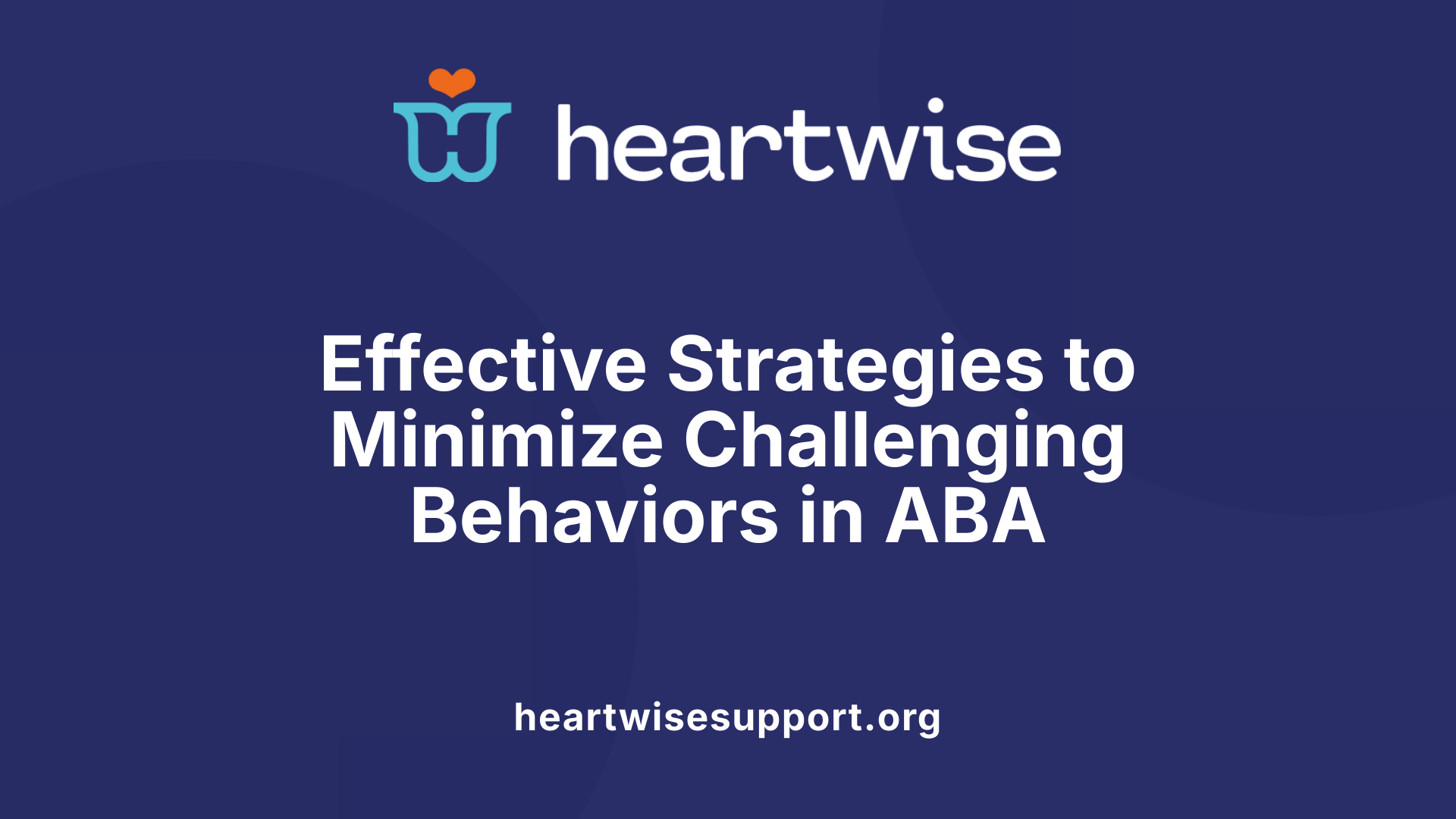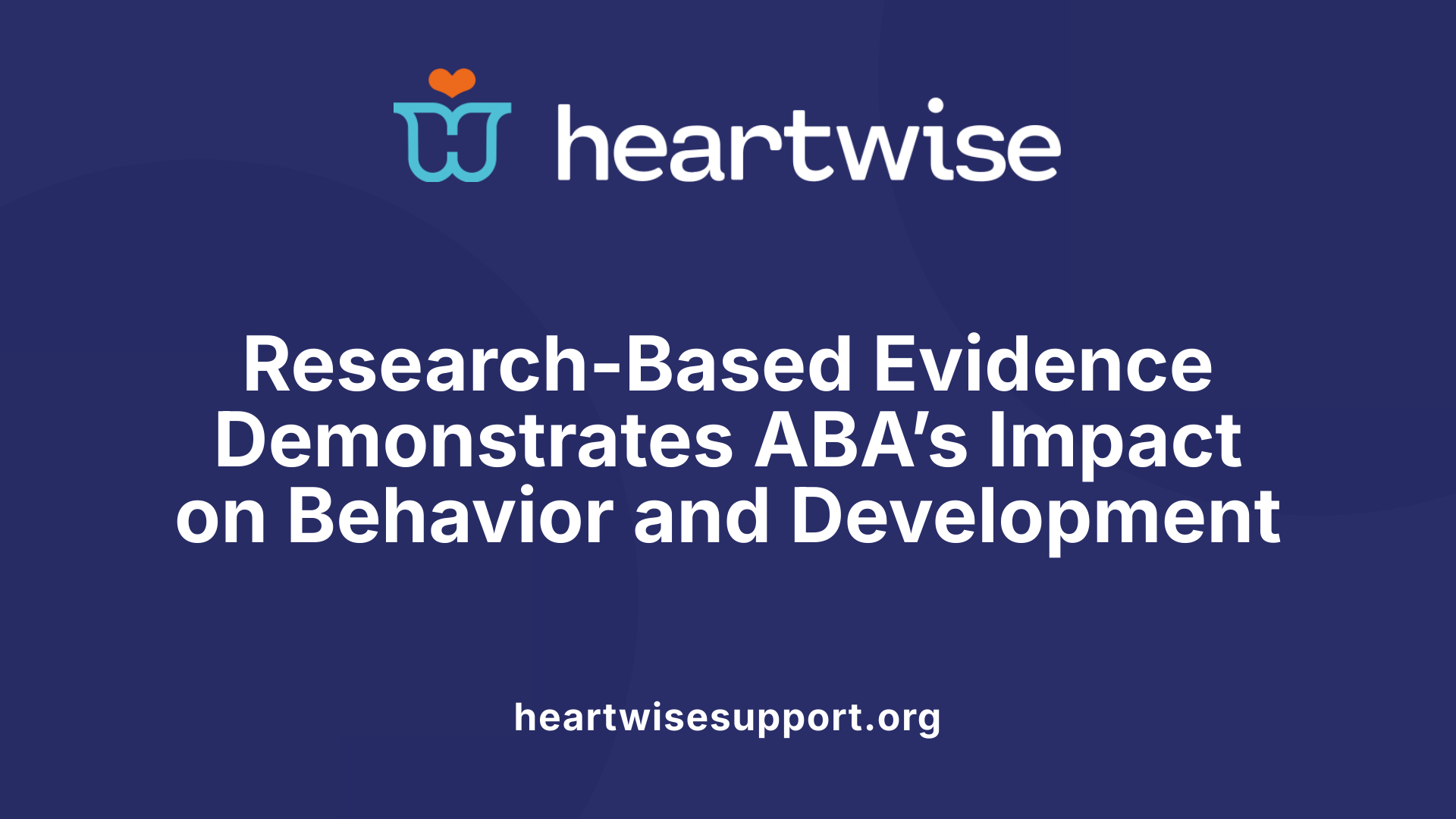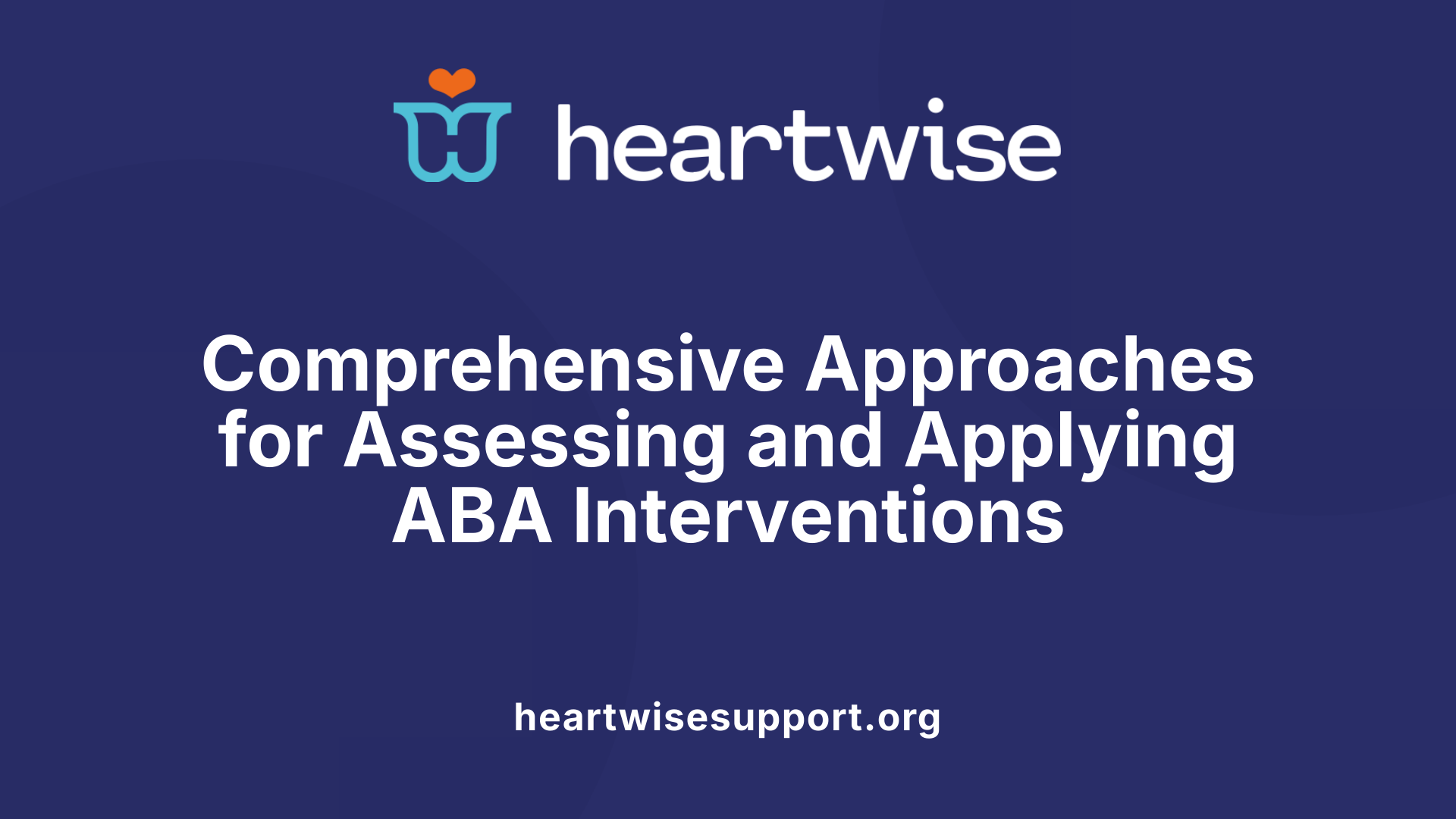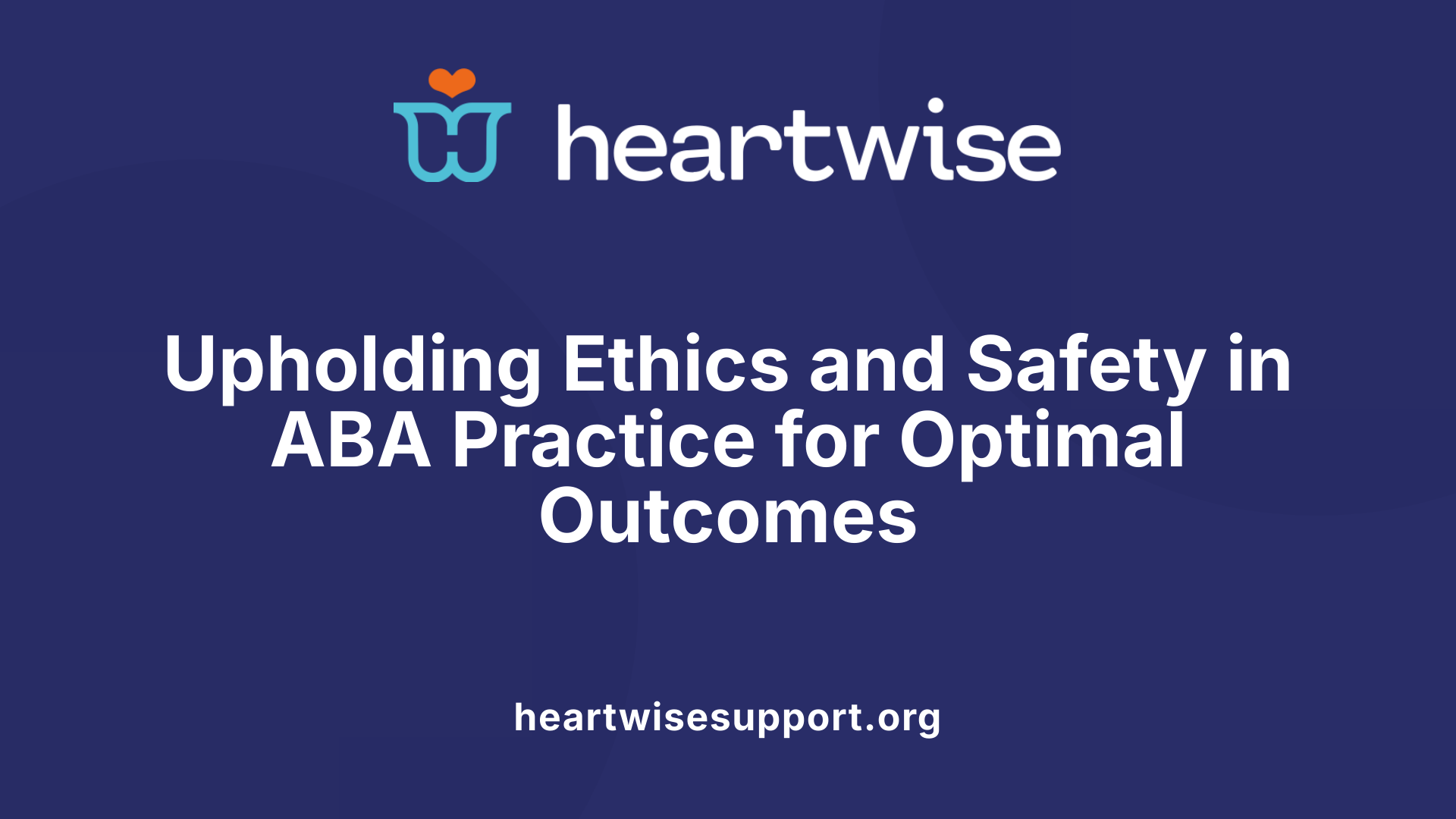Understanding the Foundations of ABA in Behavior Management
Applied Behavior Analysis (ABA) is a robust, research-based approach that systematically helps individuals modify behaviors and develop essential skills. By analyzing how behaviors occur within their environments, ABA enables practitioners to create individualized interventions aimed at reducing problematic behaviors while fostering adaptive skills. Its scientific and ethical foundation ensures that interventions are both effective and respectful, making ABA a gold standard in managing challenging behaviors, particularly in children with autism and developmental disabilities.
Core Principles and Methodologies of ABA

What are the core principles and methodologies of Applied Behavior Analysis (ABA)?
Applied Behavior Analysis (ABA) is a disciplined approach that relies on scientific research to understand and modify human behavior. It operates on specific principles that help practitioners design effective interventions. Central to ABA is operant conditioning, a process where behaviors are influenced by their consequences. Reinforcement encourages the repetition of desired behaviors by providing rewards, while punishment aims to reduce unwanted behaviors.
ABA places great importance on observable and measurable behaviors. This focus allows therapists to track progress accurately and make data-driven decisions. Techniques such as positive reinforcement serve to increase helpful behaviors, while others like prompting, shaping, chaining, modeling, and behavior contracts are used to teach new skills and modify actions.
Prompting provides cues or assistance to prompt desirable behaviors, which are gradually faded to promote independence. Shaping involves reinforcing successive approximations toward the target behavior, and chaining links multiple steps into a complete skill. Modeling demonstrates behaviors for individuals to imitate, enhancing learning.
An essential aspect of ABA is the seven dimensions that ensure its scientific rigor. These include effectiveness—whether an intervention results in meaningful change; generality—the ability to apply skills across various environments; and technological precision—clear and replicable procedures. These dimensions guide practitioners to create interventions that are not only evidence-based but also adaptable to different settings and individuals.
Overall, ABA's methodology aims to promote socially significant improvements. Whether enhancing communication, enhancing social skills, or increasing independence in daily activities, ABA systematically analyzes the relationship between environment and behavior. Its evidence-based practices have proven effective in diverse contexts, especially for children with autism and developmental disabilities.
Techniques for Reducing Problem Behaviors in ABA

What techniques are used in ABA to reduce problem behaviors?
Applied Behavior Analysis (ABA) employs a variety of strategies to help individuals reduce challenging behaviors and replace them with more appropriate skills. Central to these techniques is the use of a Functional Behavior Assessment (FBA). This assessment helps identify the underlying purpose or function of a problem behavior, such as gaining attention, escaping a task, or sensory stimulation. Once the function is understood, tailored interventions can be designed.
To prevent triggers and proactively support positive behaviors, ABA therapists use antecedent strategies. These include visual supports like picture schedules or social stories, which prepare individuals for upcoming activities. Priming involves reviewing what will happen next, reducing anxiety or resistance. Providing choices allows individuals to feel some control, decreasing the likelihood of disruptive behaviors. Environmental modifications and noncontingent reinforcement, such as offering breaks or preferred items regularly, also help set the stage for successful interactions.
Consequence-based techniques focus on adjusting how behaviors are reinforced or ignored. Extinction involves withholding reinforcement for problematic behaviors, which over time decreases their frequency. Differential reinforcement strategies such as Differential Reinforcement of Alternative behavior (DRA) or Other behavior (DRO) strengthen positive behaviors that serve the same function as the challenging ones. For example, teaching a child to request a break verbally rather than displaying tantrums.
In addition, ABA uses modeling, where desired behaviors are demonstrated, and redirection, which guides the individual towards more appropriate responses. Visual schedules help provide structure, and response blocking prevents the individual from engaging in problematic behavior during critical moments.
Throughout the intervention process, ongoing data collection and monitoring are vital. This information allows practitioners to evaluate if the strategies are effective or if adjustments are necessary, ensuring continuous progress toward reducing problem behaviors and increasing adaptive skills.
Evidence Supporting ABA’s Effectiveness in Behavioral Management

How effective is ABA in managing behaviors associated with autism and other developmental disabilities?
Applied Behavior Analysis (ABA) has a strong foundation of scientific research supporting its effectiveness as a treatment for children with autism and related developmental disorders. Numerous studies and comprehensive meta-analyses consistently demonstrate that ABA can lead to significant improvements across various domains.
Research shows that children undergoing ABA programs exhibit moderate to high improvements in intellectual functioning, language skills—both receptive and expressive—and daily living skills such as self-care and adaptive behaviors. These improvements translate to enhanced independence and better social participation.
Effect sizes, a measure of the magnitude of change, vary across different areas but generally indicate meaningful gains. For example, children often experience notable progress in communication, social interactions, and problem behaviors. Importantly, some improvements are observed even when treatment doses are lower, illustrating ABA’s potency.
However, there are challenges, including high rates of program discontinuation and instances where children receive a lower number of therapy hours than recommended. These factors can affect the overall impact of ABA interventions in real-world settings.
Despite some limitations, children with more severe behavioral and adaptive deficits tend to make modest but meaningful progress over time. This indicates that ABA can be effective broadly, regardless of initial severity.
While some recent research suggests limited effects on core autism symptoms like social reciprocity or repetitive behaviors, the overall body of evidence affirms that ABA significantly enhances functional skills and reduces problematic behaviors, contributing to better developmental outcomes overall.
Teaching Functional and Replacement Behaviors through ABA

How does ABA help in identifying the functions of problem behaviors?
Understanding why a challenging behavior occurs is essential in ABA. Professionals conduct assessments, such as Functional Behavior Assessments (FBA), to pinpoint the reasons behind behaviors. These functions typically include escape or avoidance, attention-seeking, access to preferred items, or sensory stimulation. Knowing the purpose of the behavior allows for the development of targeted strategies that address the root cause rather than just the behavior.
Can ABA be used to teach alternative or replacement behaviors?
Yes, ABA is highly effective in teaching socially acceptable replacement behaviors. Once the behavior's function is identified, therapists teach alternative ways for individuals to meet their needs. For example, instead of hitting to gain attention, a child might be taught to raise their hand or tap a communication device. These replacement behaviors serve the same purpose but are more appropriate and less disruptive.
What is Functional Communication Training (FCT)?
FCT is an ABA technique focused on teaching individuals to communicate their needs effectively. It replaces challenging behaviors with functional communication methods like verbal requests, sign language, or visual aids. FCT is especially useful for learners with limited speech, helping them express wants and needs clearly, which can reduce frustration and harmful behaviors.
How does reinforcement support learning replacement behaviors?
Reinforcement plays a vital role in promoting desirable behaviors. When a learner successfully uses an appropriate replacement behavior, it is immediately rewarded with praise, tokens, or preferred activities. This positive reinforcement encourages the repetition of the behavior. Over time, the individual becomes more likely to use the replacement behavior consistently, decreasing reliance on disruptive behaviors.
How is the generalization of replacement behaviors across different settings achieved?
It is important that learned replacement behaviors are applicable in various environments, such as at home, school, or community settings. Therapists promote generalization by practicing the behaviors across different contexts, using natural learning opportunities, and involving caregivers. Gradually reducing prompts and reinforcement helps individuals become independent in using replacement behaviors in all areas of their lives.
Overview of Teaching Replacement Behaviors in ABA
| Step | Technique | Description | Example |
|---|---|---|---|
| 1 | Identify function | Conduct assessments to understand why behavior occurs | Noticing a child runs away during tasks to escape work |
| 2 | Teach replacement | Use modeling and prompting to teach alternative behavior | Teaching a child to request a break verbally |
| 3 | Reinforce | Reward the use of the new behavior immediately | Praising or giving tokens for requesting a break |
| 4 | Promote generalization | Practice behaviors in different settings | Role-playing scenarios at school and home |
| 5 | Fade prompts | Gradually decrease assistance to foster independence | Reducing cues until the behavior is automatic |
The systematic approach of identifying functions, teaching appropriate responses, and reinforcing those responses ensures that replacement behaviors are learned, continued, and applied across various environments, leading to more adaptive and socially acceptable behaviors for individuals receiving ABA therapy.
Assessment and Treatment Strategies for Problem Behaviors

What assessment and treatment strategies are used within ABA to reduce problematic behaviors?
In Applied Behavior Analysis (ABA), addressing challenging behaviors begins with a careful assessment process. The primary tool is the Functional Behavior Assessment (FBA), which involves analyzing the context of behaviors through observation and data collection. This assessment focuses on understanding the antecedents that trigger behaviors, the behaviors themselves, and the consequences that follow, known as the A-B-Cs.
Once the function of the behavior is identified—whether it's to gain attention, escape a situation, access preferred items, or sensory stimulation—therapists develop a personalized treatment plan. These plans incorporate evidence-based strategies tailored to the individual's needs.
Treatment approaches include positive reinforcement, which rewards desirable behaviors to encourage repetition, and prompting techniques that guide the individual toward correct responses. As skills improve, prompting is gradually faded to foster independence. For behaviors that occur despite intervention, extinction procedures are used—these involve withholding reinforcement to decrease the behavior's occurrence.
Additionally, teaching appropriate alternatives—such as functional communication methods like visual supports, sign language, or requesting tools—is vital. Task analysis and behavior chaining break down complex skills into manageable steps, facilitating easier mastery.
Throughout intervention, ongoing data collection is essential. This involves measuring the frequency, duration, or intensity of behaviors to monitor progress and make data-driven adjustments.
Family involvement and collaboration form a critical part of the process. Training caregivers and family members ensures consistency and effectiveness across all settings, leading to more sustainable improvements.
Ethical and Safe Practice of ABA Therapy

What are the professional standards and ethical guidelines in ABA?
ABA practitioners are expected to follow strict ethical standards set by professional organizations such as the Behavior Analyst Certification Board (BACB). These guidelines prioritize client welfare, respect, and promoting positive change. Practitioners must obtain informed consent, respect cultural differences, and implement evidence-based practices.
Are there risks of negative side effects or misconceptions about ABA?
While ABA is highly effective when properly applied, misconceptions and improper execution can lead to concerns about negative effects. Some misapplications have caused misunderstandings, but these are typically due to unethical practices or lack of training. When delivered by qualified professionals, negative side effects are rare.
Why is it important for practitioners to be trained and qualified?
Qualified ABA therapists, such as Board Certified Behavior Analysts (BCBAs), are trained in ethical, evidence-based procedures. Proper training ensures interventions are safe, effective, and tailored to individual needs, reducing risks of harm.
How does informed consent and cultural competence matter?
Informed consent involves explaining the goals, methods, and potential risks of ABA therapy upfront, ensuring families and clients are comfortable with the process. Cultural competence ensures practices respect individual backgrounds, fostering trust and positive engagement.
How do practitioners monitor for harm and promote positive outcomes?
Continuous data collection and regular progress assessments are crucial. Practitioners adjust programs as needed to prevent harm and enhance benefits. Ethical practice mandates vigilance to minimize negative effects and maximize socially meaningful improvements.
| Aspect | Focus Areas | Additional Details |
|---|---|---|
| Professional Standards | Ethical guidelines, evidence-based practice | Guided by BACB standards; ongoing professional development |
| Risks and Misconceptions | Negative effects, unethical practices | Rare with qualified providers; often due to misuse |
| Practitioner Qualifications | Training, supervision, certification | BCBAs and RBTs with ongoing education |
| Informed Consent & Culture | Transparency, respect, cultural awareness | Critical for ethical engagement |
| Monitoring & Prevention | Data collection, adjustments, safety checks | Ensures positive progress while preventing harm |
When delivered ethically by trained professionals, ABA therapy is a safe and effective approach that prioritizes the welfare of individuals. Ongoing oversight and adherence to professional standards help prevent negative side effects and promote meaningful, positive change.
Myths and Misconceptions about ABA
What are some common misconceptions about ABA therapy?
There are several widespread misunderstandings about Applied Behavior Analysis (ABA). One common misconception is that it is only effective for autism, and that it focuses solely on reducing problematic behaviors without promoting positive skill development. Some believe that ABA employs harsh punishment or is overly rigid and robotic in its approach.
In reality, ABA is a flexible, science-based intervention that emphasizes positive reinforcement and individualized strategies. Its primary goal is to foster meaningful improvements in communication, social skills, independence, and safety. ABA programs are highly tailored to each person’s needs, involving ongoing assessment and adjustments.
Supported by extensive research and endorsed by reputable organizations such as the American Psychological Association and the US Surgeon General, ABA is recognized as a best practice treatment, particularly for autism spectrum disorder. It employs techniques grounded in operant conditioning, focusing on rewarding desired behaviors rather than punishing undesired ones.
Many misconceptions also ignore the personalized nature of ABA programs. Practitioners develop individualized plans that respect each person's unique strengths and preferences. Family involvement is a vital component, ensuring that strategies are consistent across settings, including home, school, and community.
Overall, understanding that ABA is a respectful, adaptable, and evidence-based approach helps dispel myths and highlights its true potential to improve quality of life for those it supports.
Broad Applications of ABA Beyond Autism
Is ABA therapy only for autism or can it be applied to other behaviors and conditions?
Applied Behavior Analysis (ABA) is widely known for its success in helping children with autism spectrum disorder (ASD), but its use extends well beyond this population. The principles of ABA—such as reinforcement, antecedent analysis, and behavior modification—are applicable to a dramatic range of behaviors and conditions.
One of the distinguishing features of ABA is its scientific foundation on observable and measurable behavior. Because of this, professionals can tailor interventions to various needs across different ages and diagnoses. For example, ABA techniques are used to improve communication, social skills, and self-care in individuals with developmental disabilities unrelated to autism.
In addition to developmental conditions, ABA has been adapted for mental health issues like depression, anxiety, and substance abuse. For instance, behavioral interventions can help manage avoidance behaviors, improve motivation, or establish healthier routines.
Aging-related problems, such as dementia and other cognitive declines, also benefit from ABA strategies. These may focus on maintaining independence, managing behavioral symptoms, or establishing daily routines that promote safety.
Beyond individual therapy, ABA principles are applied in diverse fields such as organizational management, health, and environmental conservation. In workplaces, ABA techniques help in behavior management and training to foster productivity. Environmental efforts utilize ABA to promote sustainable behaviors like recycling or energy conservation.
In educational settings, ABA supports not only children with disabilities but also general education through positive behavior support systems, promoting classroom management and effective learning strategies. As it is based on empirical data rather than assumptions, ABA can adapt to meet the specific needs of many different scenarios.
In summary, ABA is not restricted to autism. Its proven methodologies are adaptable to various behaviors—whether for supporting mental health, aiding aging populations, or optimizing organizational practices—highlighting its broad relevance and potential. This versatility is rooted in its core focus on observable actions, making it a powerful tool for meaningful, measurable change in many contexts.
Real-World Example of Behavior Reduction in ABA

What is an example of behavior reduction in ABA?
An illustrative case of behavior reduction in ABA involves a child who frequently has tantrums to escape challenging tasks. Instead of allowing the tantrums to continue, therapists work to teach the child more appropriate ways to communicate their needs, such as saying "I need a break." This shift not only reduces disruptive behaviors but also promotes functional communication skills.
How does the assessment process, including FBA, support behavior reduction?
Before implementing interventions, behavior analysts conduct a thorough functional behavior assessment (FBA). This process helps identify the purpose or function behind the challenging behavior—whether it seeks to gain attention, escape from tasks, access preferred items, or stimulate sensory input. Understanding the function ensures that strategies are targeted and effective.
What intervention methods are commonly used?
Interventions typically combine antecedent strategies and consequence management. For example, providing choices or priming individuals before tasks can prevent tantrums. Reinforcement of alternative behaviors, such as requesting a break appropriately, is crucial. Techniques like prompting to teach the desired response, followed by reinforcement, are used to encourage compliance.
In some cases, extinction is implemented, which involves withholding reinforcement for the problematic behavior, thereby reducing its frequency over time. Differential reinforcement of alternative behaviors (DRA) further supports replacing challenging behaviors with more appropriate responses.
Why is data monitoring and adjustment important?
Continuous data collection allows therapists to observe changes in behavior, measure progress, and assess the effectiveness of interventions. Metrics such as frequency, duration, and response latency guide necessary adjustments. If the desired reduction isn’t occurring, modifications to the plan ensure ongoing effectiveness and ensure the child's needs are met.
How does ethical practice and collaboration play a role?
Working ethically involves collaborating with caregivers, teachers, and other professionals to develop individualized and culturally sensitive intervention plans. Qualified ABA practitioners, like Board Certified Behavior Analysts (BCBAs), ensure that strategies are implemented responsibly, respecting the child’s dignity while promoting positive behavioral change. Regular communication and data sharing foster trust and support the child’s success.
| Aspect | Description | Additional Notes |
|---|---|---|
| Assessment | Conducting FBA to identify function | Basis for tailored interventions |
| Intervention | Teaching communication, prompting, reinforcement | Replaces problem behaviors with functional responses |
| Data Monitoring | Tracking behavior changes over time | Ensures treatment efficacy |
| Ethical Practice | Collaboration with family and professionals | Promotes safe and respectful intervention |
This comprehensive approach exemplifies how understanding, planning, and ethical execution align to effectively reduce challenging behavior in ABA, helping individuals develop appropriate skills and independence.
Empowering Through Evidence-Based Practice
Applying ABA techniques with fidelity and ethical integrity can lead to profound improvements in managing challenging behaviors. By systematically assessing, planning, and implementing tailored interventions, practitioners and families can help children develop functional skills, enhance independence, and improve quality of life. The ongoing commitment to data collection, professional training, and family involvement ensures that behavior reduction efforts are both effective and respectful. Ultimately, ABA empowers individuals to achieve their full potential while fostering a supportive, adaptive environment where positive behaviors thrive.
References
- How to Address Challenging Behaviors with ABA in 4 Simple Steps
- Applied Behavior Analysis (ABA) | Autism Speaks
- Reduce Problem Behaviors by Teaching Replacement Behaviors
- ABA Behavior Strategies | Positive Change Techniques
- Understanding Behavior Reduction Techniques in ABA Therapy
- ABA Techniques: Strategies for Behavior Analysts - GSEP Blog
- 7 Surprising Benefits of ABA Therapy for Kids You Need to Know
- 10 Effective ABA Behavior Management Strategies - Ori Learning











